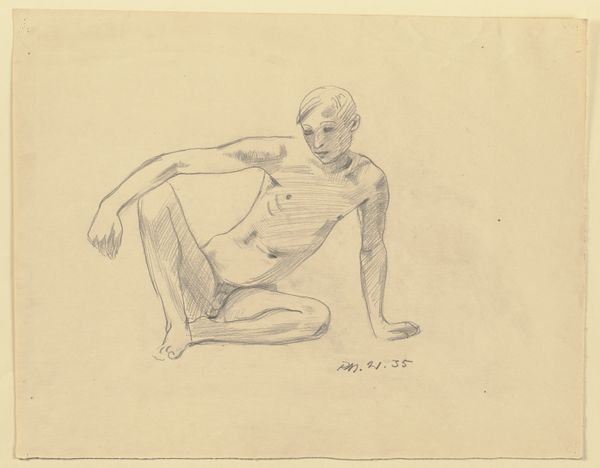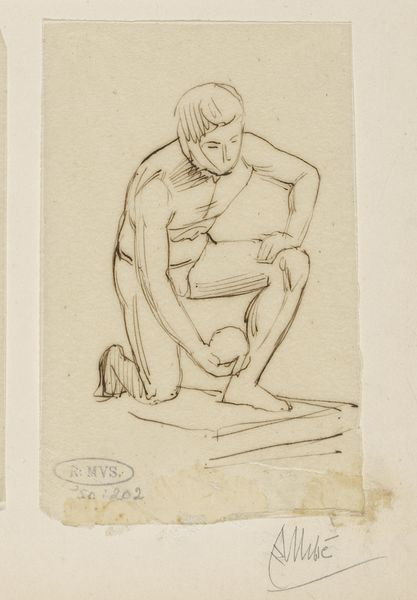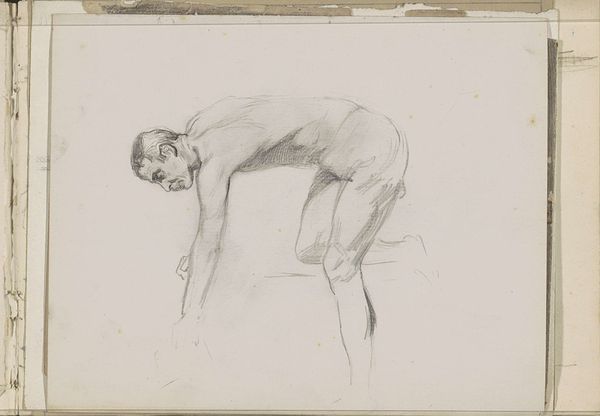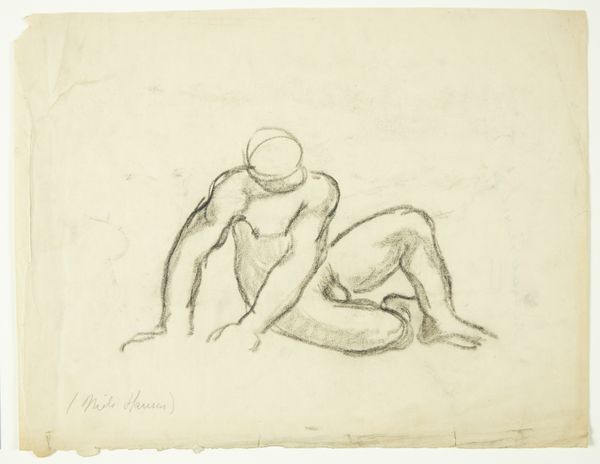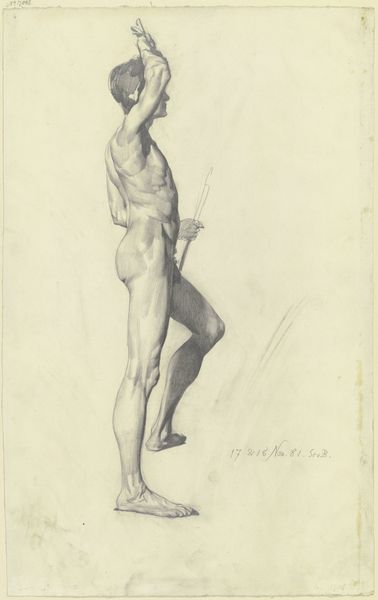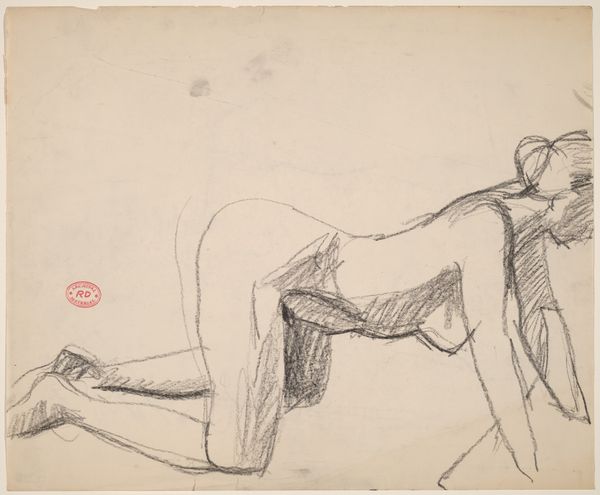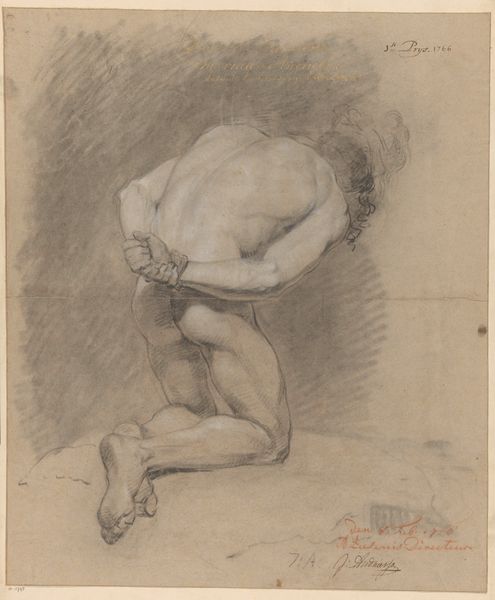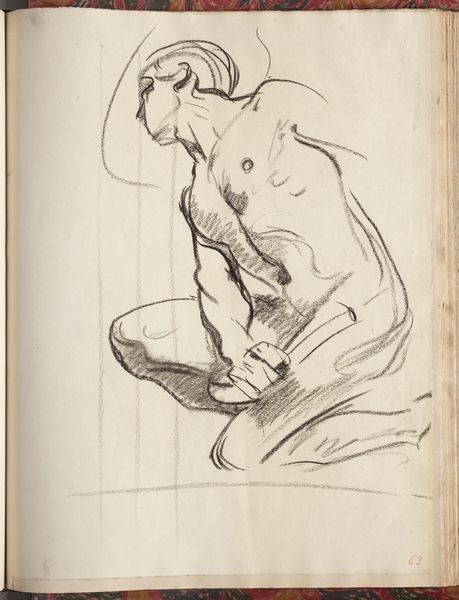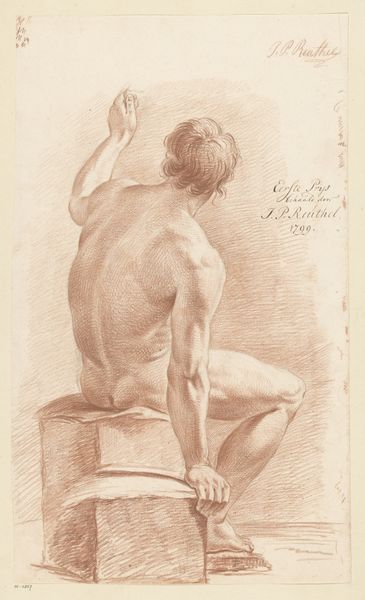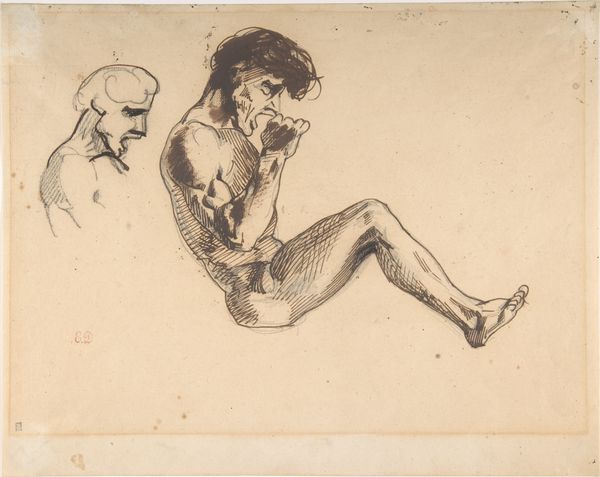
Studieblad met een knielende man en kop van een man uit Nederlands-Indië c. 1898
0:00
0:00
drawing, pencil
#
portrait
#
pencil drawn
#
drawing
#
pencil sketch
#
figuration
#
pencil
#
pencil work
#
academic-art
Dimensions: height 321 mm, width 386 mm
Copyright: Rijks Museum: Open Domain
Nicolaas van der Waay's study sheet presents us with a kneeling man and a head, both figures originating from the Dutch East Indies, rendered with graphite. The kneeling posture immediately draws our attention. Throughout history, kneeling has been a signifier of submission, supplication, and reverence. Consider the countless depictions of kneeling figures in religious art, from medieval devotional panels to Renaissance altarpieces. But here, stripped of overt religious context, the gesture takes on a more ambiguous, perhaps secular, dimension. The act of kneeling has roots in ancient rituals, reflecting a primal human response to authority or the divine. The body, bent and humbled, expresses a vulnerability that resonates across cultures. It is a gesture imbued with an emotional charge that speaks of our collective memory of subservience and respect. The kneeling man, caught in this timeless posture, invites us to reflect on the complex interplay between power, humility, and the enduring power of inherited symbols. The cyclical nature of these gestures echoes throughout art history, reappearing in new forms and contexts, continually reshaped by the ever-evolving human experience.
Comments
No comments
Be the first to comment and join the conversation on the ultimate creative platform.
